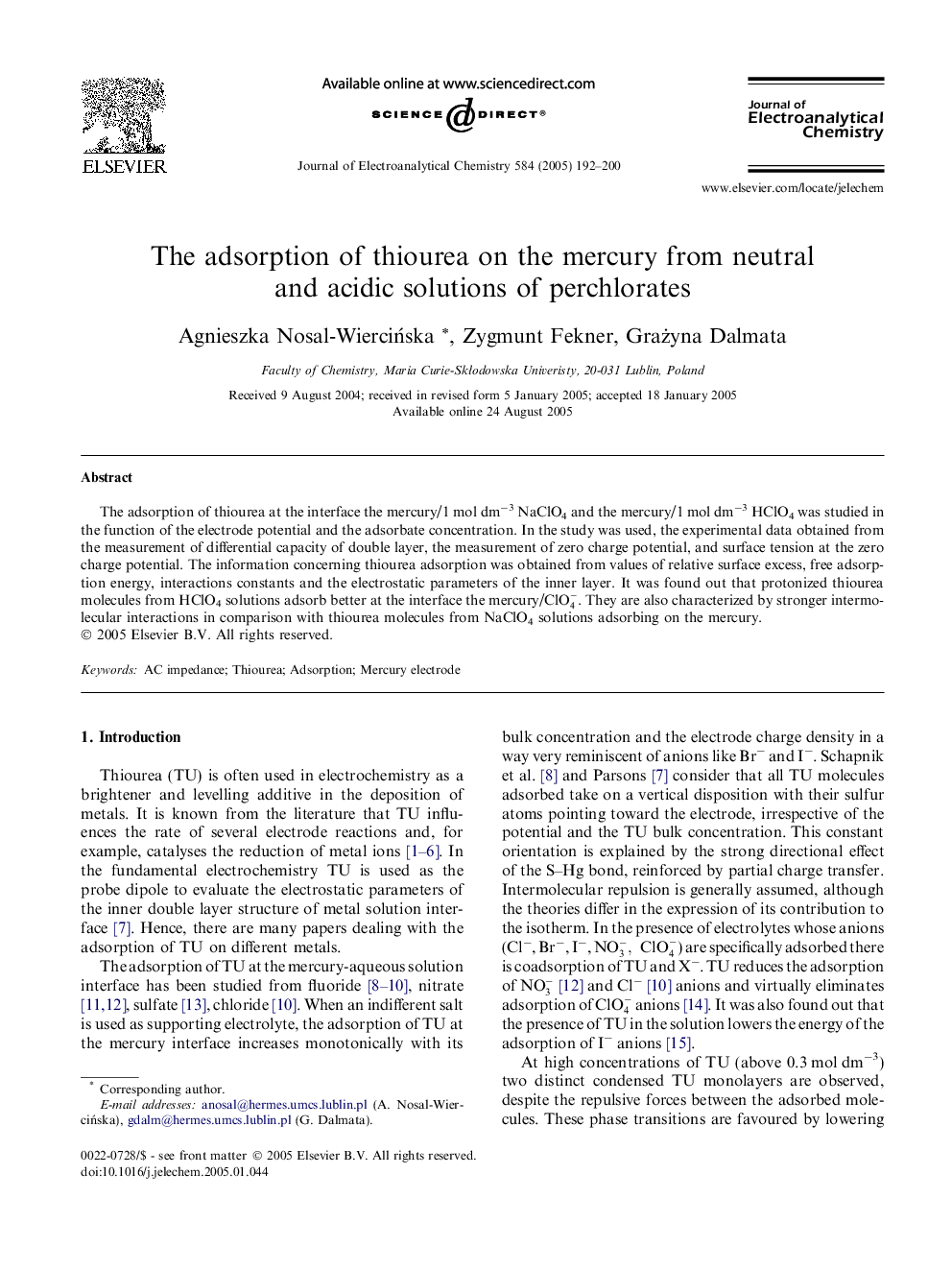| Article ID | Journal | Published Year | Pages | File Type |
|---|---|---|---|---|
| 10275768 | Journal of Electroanalytical Chemistry | 2005 | 9 Pages |
Abstract
The adsorption of thiourea at the interface the mercury/1 mol dmâ3 NaClO4 and the mercury/1 mol dmâ3 HClO4 was studied in the function of the electrode potential and the adsorbate concentration. In the study was used, the experimental data obtained from the measurement of differential capacity of double layer, the measurement of zero charge potential, and surface tension at the zero charge potential. The information concerning thiourea adsorption was obtained from values of relative surface excess, free adsorption energy, interactions constants and the electrostatic parameters of the inner layer. It was found out that protonized thiourea molecules from HClO4 solutions adsorb better at the interface the mercury/ClO4-. They are also characterized by stronger intermolecular interactions in comparison with thiourea molecules from NaClO4 solutions adsorbing on the mercury.
Related Topics
Physical Sciences and Engineering
Chemical Engineering
Chemical Engineering (General)
Authors
Agnieszka Nosal-WierciÅska, Zygmunt Fekner, Grażyna Dalmata,
